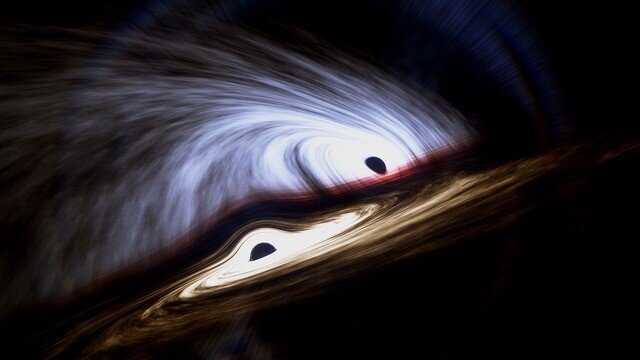Scientists recently observed two black holes merging into a new one, resulting in a high-speed ‘kick’
A group of scientists just witnessed how two black holes merged and the created black hole ‘received a kick’ that sent it flying at high velocity. Scientists at Caltech calculated that also that black hole sped up to about 5 million kilometers per hour plus or minus a few million, in a paper yet to be published in Physical Review Letters. That’s incredibly fast: This, of course, is a simplification, but the point is that the speed of light is only 200 times faster.

Then, gravitational waves – disturbances in spacetime – sped the black hole further on its way. This will take place whenever any two black holes will be spiraling inwards until they merge, they always give out signals that either stretch or contract spacetime. If, for some reason, gravitational waves are released in a preferred direction, the black hole will experience a kind of recoil.
Astrophysicist Vijay Varma of the Max Planck Institute for Gravitational Physics in Potsdam, Germany, compares it to what happens when a rifle recoils after a shot has been fired.
The black holes ‘spacetime waves’ were detected by gravitational wave observatories LIGO and Virgo based in the United States and Italy when the black holes were near earth on the 29th of January. Those waves provided details on the black holes’ merging, suggesting that a major kick was possible. While the black holes danced around each other, the plane in which they circled–swerved, or precessed, like a top that tries to stand firmly as it spins on the floor. In two merging precessing black holes are expected the generation of higher kicks.
To check if the black hole had been booted, Varma and his colleagues decided to delve deeper into the data. To estimate the kick velocity, the researchers matched the data to numerous expected versions of black hole mergers developed using computer simulations that answer the general relativity equations and Einstein’s theory of gravity (SN: 2/3/21). The bounce-back was so powerful, the researchers found that the black hole was probably thrown out of its house and left standing on the outer street.
Black holes are believed to merge and colide in places such as the globular clusters, where stellars and black holes are dense. Using these values the team concluded that the likelihood of the booted black hole staying in a globular cluster is a mere 0. 5 percent. The probability of a black hole lingering in another sort of confined space, called a nuclear star cluster, was about eight percent.
Depending on the black hole’s terrific K. E. M. , it could have great impacts. They include the mergers of stellar mass black holes, that is, when a star succumbs to supernova and plunges into a black hole. Called ‘recoiling’, scientists are unsure whether black holes that clump together might merge and then re-merge again several times. If so, it might be useful in shedding light on specific exceptionally massive black holes in prior mergers. But if merged black holes are often kicked out of their close vicinity, multiple mergers are less likely to happen.
“In my opinion, kicks play quite a key role in explaining how stellar-mass black holes with huge mass originate,” varma said.
Earlier, scientists found that gravity wave had given the stellar black holes powerful kicks, the larger cousins of these monsters are known to reside at the centers of galaxies. Nevertheless, such conclusions have been made on the basis of observations of light and not gravitational waves. “Gravitational waves, in a way, are cleaner and easier to interpret,” says astronomer Manuela Campanelli of the Rochester Institute of Technology in New York, who did not have any part in the current paper.
LIGO and Virgo data have already given hints for modest kicks for black holes. The present work is therefore the first to successfully employ gravity waves to confirm the presence of a black hole at the receiving end of a high velocity kick.
This is the opinion of Campanelli where the seasoned and large kick does not come as a surprise. Campanelli and colleagues have theoretically predicted in earlier works that such forceful kicks were plausible. “It is always satisfying to witness when people can quantify through observations what one has estimated would happen through computations. ”
Do not forget to share your opinion with us to provide you with the best posts !



0 Comments